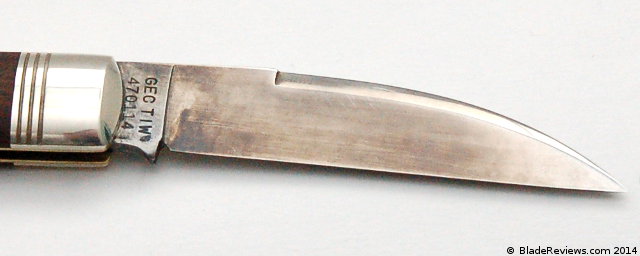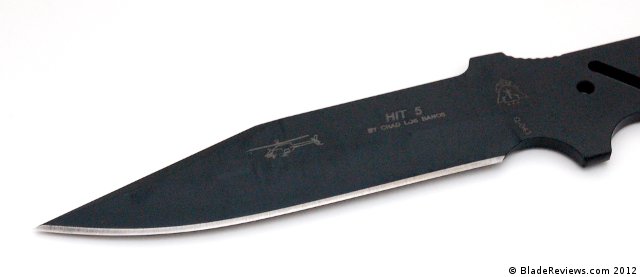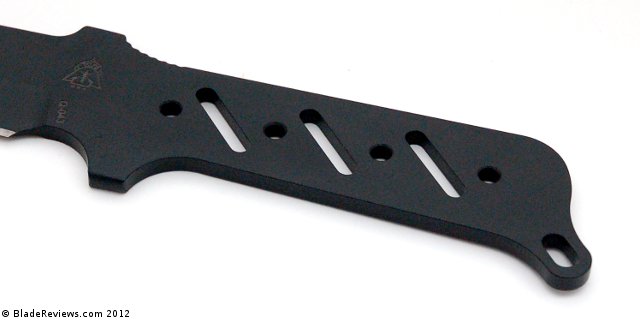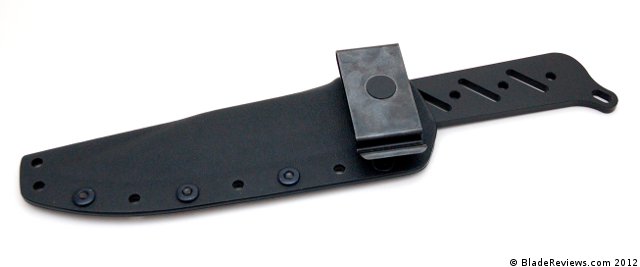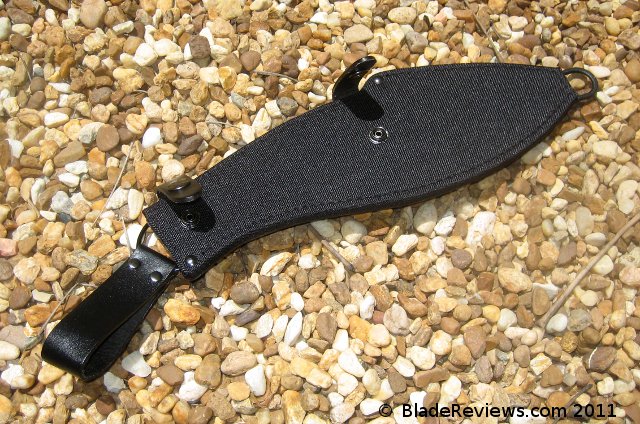Last Updated: July 20, 2019
Down here in Florida we don’t get a lot of seasonality. For example, I wore shorts and flip flops on Christmas. But when the air starts to turn cool I get a hankering for 2 things: cigars and fixed blade knives. I am pleased to say I have been able to indulge in both this fall, and am ready to provide a review on a quintessential camp knife: the Becker BK-2.

Buy the Ka-Bar BK-2 at BladeHQ
Built in the USA by Ka-Bar, and designed by Renaissance man Ethan Becker, the BK-2 has been widely accepted as a go to survival / camp knife for years now. I can’t tell you why I haven’t reviewed this classic fixed blade yet. There are many knives out there I’d love to review (one day I’ll even get to the classic USMC Ka-Bar) but just haven’t found the time for. Well, scratch the BK-2 off the list. This one has been tried and tested and I’m pleased to share some thoughts with you today.
General Dimensions and Blade Details
The BK-2 has an overall length of 10-5/8″, a 5-1/4″ blade, and weighs 16 ounces. The BK-2 is a chunky knife. Pictures really don’t do it justice, as the proportions may suggest a smaller knife. I was pleasantly surprised by this, although if I were planning an ultra lightweight backpacking trek along the Appalachian trail I’d be less pleased. This strikes me as a tool for a camp site, truck, or your back yard – not something you will want to schlep for miles and miles on end.
Here is a size comparison with the ESEE-3:

The blade is a .25″ (6.35mm) thick slab of 1095 high carbon steel. For whatever reason when I ordered this knife I thought it might be interesting to compare it with my ESEE-3. It turned out to be a poor comparison, because next to my ESEE-3 the thickness of the blade is almost comical. The ESEE-3 might as well be made of aluminum foil when compared with the BK-2. Anyhow, the blade of the BK-2 is a classic drop point shape with a high flat grind and a sturdy tip. The knife has also been powdercoated. The powdercoating is heavily textured like on my ESEE blades. The coating will provide some rolling resistance when trying to cut deeply into things – at least until it gets smoothed down with use.
The BK-2 is interesting in that it can accomplish a lot of different tasks within its relatively small footprint. It’s good for batoning / splitting wood. I used it with great success to prepare a stack of wood for a couple bon fires. I was able to split logs with up to a 4″ diameter easily. You can do some carving with the knife, and I used the BK-2 to whittle up some shavings / tinder to start the fire, and to carve a few stakes for cooking.
Although it’s a little thick and clumsy in my hands for serious carving, I was able to get the job done. The BK-2 is also a decent chopper considering its size. This is a shorter knife, so naturally it won’t chop like an axe or a big fixed blade like the Junglas, but if you need to do limited chopping it will get the job done. Case in point, I needed to chunk up some large frozen sardines for a fish trap I was using – the BK-2 blew through those suckers. For these reasons the BK-2 is a natural choice for camp chores: building fires, prepping food, and odd jobs around a camp site where a sharp object might come in handy.
The only downside is that the BK-2 doesn’t particularly excel at anything. If you need a dedicated chopper, or an ultra fine carving knife, then you will want to look elsewhere. If you want a tough “do it all” knife, then the BK-2 could be a good choice.

As previously mentioned, the BK-2 comes in 1095 high carbon steel. I have wrote about this steel at length, especially over the course of reviewing an number of ESEE knives. 1095 is inexpensive and hearty. It’s easy to sharpen and holds a nice edge, especially when working with wood. It’s tough, but if you do chip it, you will be able to salvage the edge. 1095 is a good working steel, and I think it’s a great choice for this knife.
Handle and Ergonomics
The BK-2 features a spacious zytel (high density plastic) handle over it’s full steel tang. This is a very basic handle design, and it’s perfect for a workhorse knife like this. Ethan Becker apparently spent a lot of time getting this handle shape right, which is why you find it on his whole series of knives. The handle material is humble (although you can easily pick up a pair of micarta scales), but it’s lightweight, and very tough. The finish work on the handle is great. There are no sharp edges, and all of the hardware is sunk deeply into the handle. Rounding things out are an oversize lanyard hole and a generous exposed pommel that can be used for hammering / crushing things. This is a very clean and highly functional handle design. It has also been well executed.
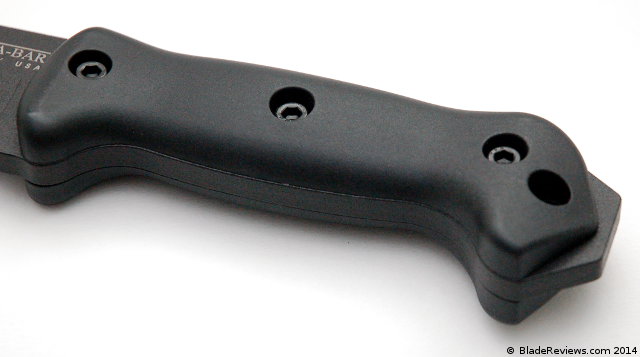
From an ergonomic standpoint the handle of the BK2 feels as straightforward as it looks. This is a thick handle with a generous palm swell. There is plenty of room for larger hands and the absence of jimping / aggressive texture allows you to work with this tool for extended periods of time without blistering your thumb. Those wanting a little more grip could upgrade to micarta scales, or wrap the handle with athletic tape or a “ranger band” (a section of bicycle inner tube). I did not notice any hot spots while using this knife. This is a fantastic handle shape.

Sheath
The BK-2 comes complete with a plastic and nylon sheath. The sheath is simple, lightweight, and sturdy. It has excellent retention, yielding a very satisfying snapping sound when you shove the knife in place. There is no blade rattle at all, and I am not the least bit concerned about the blade ever falling out from the sheath. There is also a drain hole.

The nylon belt loop is simple and features a snap fastener for extra retention. It is fully removable with a Phillips head driver, and the plastic sheath is riveted together. The rivet holes and slots leave you with plenty of options for molle locks, tek-loks, paracord, and webbing. This is an outstanding sheath and it compliments the knife perfectly. Also, the snap fastener lies flat, so I have yet to cut into it when drawing the knife. The only creature comfort missing is that you need to take your belt off to feed it through the belt loop. I like being able to remove a belt sheath without having to take my belt off, but it’s not a deal breaker.
Becker BK-2 Review – Final Thoughts
The BK-2 is an impressive knife, especially when you consider that they are selling for right around $65.00. This is a lot of high quality tool for the money. The simplicity of the design, the quality of materials, and the extremely high level of fit and finish all make the BK-2 punch above its weight. Plus, it works. The stout geometry of the blade is excellent for processing wood, the handle is about as comfortable as they come, and the sheath is lightweight and functional. Finally, the knife itself is made in the USA (the sheath is made in Taiwan). I happen to like a USA made product, although it certainly isn’t a requirement for a favorable review.
All told, it is easy for me to see why the Ka-Bar Becker BK-2 has earned such a following and reputation. It’s simple and it works. If you are looking for an indestructible camp knife or a compact (but very stout) survival knife, then I highly recommend the BK-2.
I recommend purchasing the BK-2 at Amazon.com or BladeHQ. Please consider that buying anything through any of the links on this website helps support BladeReviews.com, and keeps the site going. As always, any and all support is greatly appreciated. Thank you very much.



